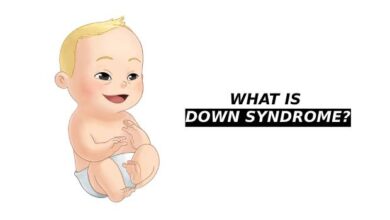Shaken Baby Syndrome

Shaken baby syndrome is also known as abusive brain trauma, whiplash shake syndrome or inflicted skull injury. It’s a serious brain injury that results from shaking an infant or toddler. Shaken baby syndrome is a condition that causes brain damage and prevents children from receiving enough oxygen.
Shaken baby syndrome can cause permanent brain damage and even death. It is possible to prevent shaken baby syndrome. Parents who are at high risk of harming their child can get help. Parents can also educate other caregivers on the dangers of shaking baby syndrome.
Signs and symptoms of shaken baby syndrome
Signs and symptoms of shaken baby syndrome include:
- Extreme fussiness and irritability
- It is difficult to stay awake
- Breathing problems
- Poor eating
- Vomiting
- Pale or bluish skin
- Seizures
- Paralysis
- Coma
It is possible that there are no signs of injury to the child’s body. Sometimes the child’s face may be bruised. Sometimes, the injuries may not be visible immediately. These include bleeding in the brain, eyes and spinal cord damage. Ribs, skull, legs, and other bone fractures.
Children with shaken babies syndrome may have signs and symptoms that indicate previous child abuse. A mild case may cause a child to appear normal, but may eventually develop behavioral or health problems.
When Should You See a Doctor?
If your child is shaking violently, get immediate medical attention. Call your child’s doctor immediately or take them to the nearest emergency department. Your child’s health and life may be saved if you get medical attention immediately. All suspected cases of child abuse must be reported to the state authorities by health care professionals.
Causes of Shaken Baby Syndrome
Babies often have trouble supporting their heavy heads because of weak neck muscles. Babies can be shaken so that their fragile brains move back and forth within the skull. This can cause bleeding, swelling, and bruising.
Shaken baby syndrome is when a parent or caregiver shakes a baby toddler because of anger or frustration. Because sometimes, the child will not stop crying. Shaken baby syndrome doesn’t usually result from bouncing a child on one knee, minor falls, or rough play.
Risk factors
These things could make caregivers or parents more likely to shake their baby, resulting in shaken baby syndrome.
- Baby expectations that are unrealistic
- Single parenthood or young parents
- Stress
- Domestic violence
- Substance abuse or alcoholism
- Situations in unstable families
- Depression
- History of child abuse
Complications
Brain damage can be irreversible even if your shake an infant lightly. Many children that are affected by shaken-baby syndrome and die. Shaken baby syndrome survivors may need to continue receiving medical care for life-threatening conditions like:
- Partial or complete blindness
- Learning problems, developmental delays and behavior issues
- Intellectual disability
- Seizure disorders
- Cerebral palsy
Prevention of Shaken Baby Syndrome
Parents can learn new parenting skills to help them understand the dangers and how to calm a crying baby. You may feel tempted to do whatever you can to calm your baby’s crying. But it is important to treat them gently.
There is no reason to shake a child. So seek help if you are having difficulty managing your emotions and the stress of parenthood. Your child’s doctor can refer you to a counselor or another mental health provider. If you have hired caregivers, siblings or grandparents who take care of your child, make sure they are aware of the dangers of shaken baby syndrome. This way you can prevent this syndrome.
Diagnosis
A specialist may have to examine the baby to see if he has been abused. Also the doctor will inspect the child and ask about their medical history. To detect injuries, there may be several tests that are required.
- Skeletal examination. Doctors can take a variety of X-rays of bones, including the spine, skull, arms, legs, feet and spine to determine if fractures are accidental. Specialists also use this testing to identify previous fractures.
- Eye examination. A comprehensive eye exam can detect bleeding or other injuries.
- Blood tests. There are many genetic and metabolic disorders that can lead to symptoms similar to shaken babies syndrome. So doctors can rule out these conditions by doing blood tests.
- Magnetic resonance imaging. MRI uses a strong magnetic field and radio waves in order to take detailed images of a child’s brain. You may see brain bleeding, brain bruising and other signs of reduced oxygen. An MRI can be difficult for a child who is unstable.
- Computerized Tomography (CT) scan. CT scans use X-ray images for cross-sectional views of the body, this way a CT scan of the brain can detecte an urgent injury. To determine if additional injuries exist, doctors need to perform a CT scan of your abdomen.
The extent of injuries may requires you to admit your baby to a pediatric intensive-care unit, so that he can get the care he needs.
Treatment
A child may require emergency treatment, such as breathing support or surgery to stop bleeding from the brain.




